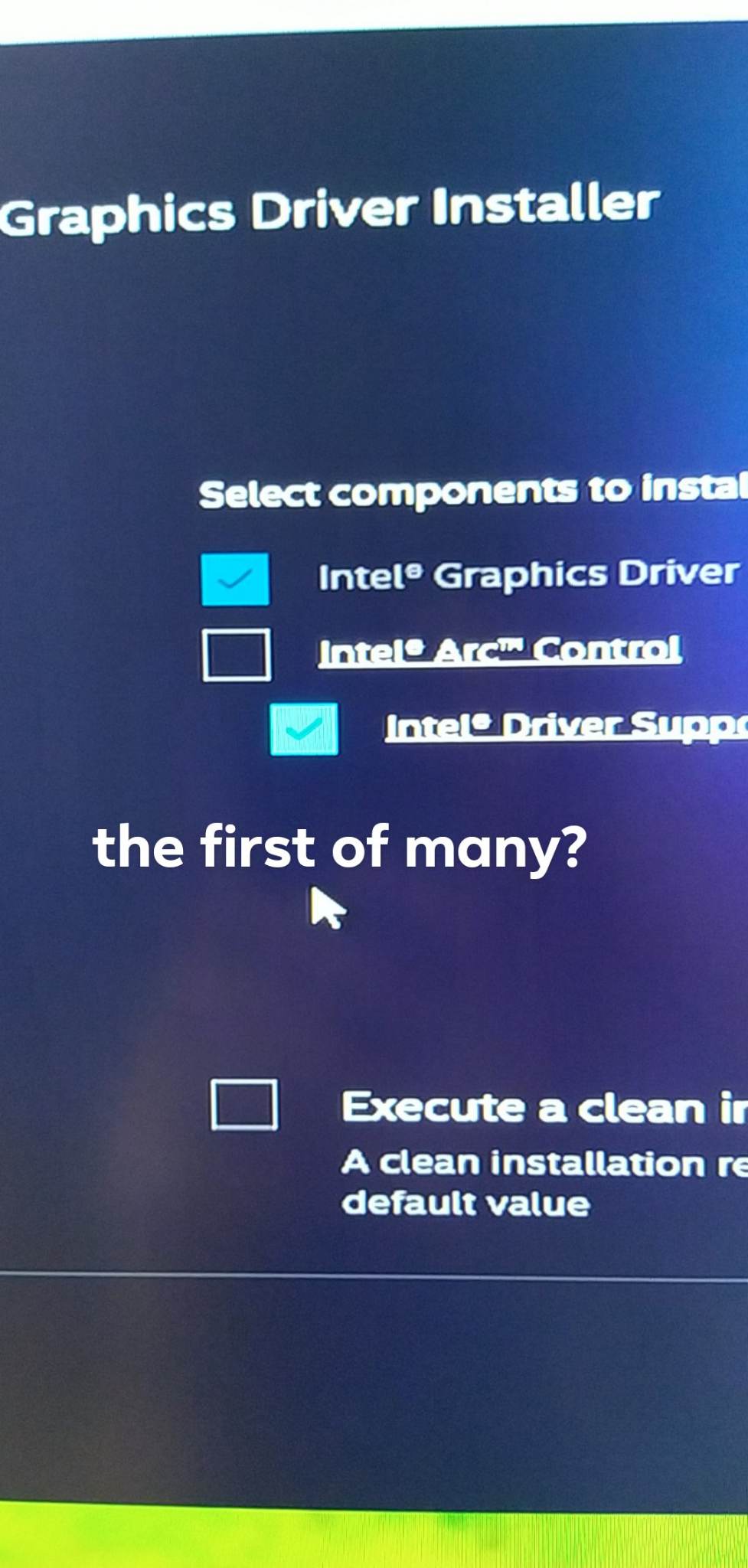Intel Arc: the initial experience
Intel has become the third player in the dedicated computer graphics hardware sector, finally bringing some competition to the duopoly of AMD and NVIDIA. However, launching a whole new product line into a field that they have never tried before is fraught with 'gotchas' and various issues that nobody was expecting.
Driver installation
The first hurdle is that the GPU does not support any basic display modes that would come close to your monitor's native resolution, so you're stuck looking at a squished 640x480 (presumably) image until you get them sorted.
Speaking of which, Intel drivers are not provided by Windows Update (yet?). So you have to go and download/install them yourself. Oh well.
Even when you do, the installer is a bit wack, as demonstrated by this lovely image:

Resizable Base Address Register
Being able to resize the Base Address Register space/size is key to Intel Arc's performance. It allows the CPU to access any portion of Video RAM in one action, rather than banking 256 MB chunks of memory-mapped I/O. However, the Intel Driver Support Assistant claimed it was disabled by my motherboard. Except, it wasn't. HWiNFO64 and GPU-Z, two long-standing 3rd party hardware information programs both confirmed that it was enabled. I don't know how to verify if it's actually working though.
HDR
Given this is a brand new architecture, you'd think that HDR support would be a-okay tip top. Unfortunately not. Horizon Zero Dawn, which provided best-in-class HDR on my poor VESA HDR400 monitor works, but doesn't quite look right. Assassin's Creed: Odyssey simply doesn't work with HDR - it says not detected even whilst fully enabled in Windows.
Other little things
Lastly, there's a few little extras to note:
Frame count
If you liked the GeForce overaly providing performance metrics like an FPS count, or even 1% lows, sorry. The Intel Arc overlay does not provide this functionality.
NVIDIA SHIELD controller
I've never bought an actual controller, as the one that came with my 2015 NVIDIA SHIELD worked a treat with a simple USB cable... except they really meant it when you needed an NVIDIA GPU and GeForce Experience installed. Windows recognises a device has been plugged in, and that's it. An online gamepad tester in Google Chrome shows it works fine, but local software/games don't pick it up, neither does the joy.cpl gamepad/joystick tester and configuration utility built into Windows
Overclocking
My A750 Limited Edition is rated for 2050 MHz, but out of the box it will boost straight to 2400 with due load. It seems a bit hesitant to actually run fast, often running at a significantly reduced clock speed even during games (presumably to save power). In WarThunder, I was able to max out the "GPU performance boost" slider to reach 2700 MHz, although it eventually crashed after a few more seconds of gameplay. Further testing with FurMark got me to ~2600 MHz before crashing. And by crashing, I really mean a hard reset - the whole PC crashes and then POSTs and boots again. If you screwed up an overclock on a GeForce GPU, you might just see the game lock up, or crash, or in the worst case the scren will flash whilst the GPU driver crashes and restarts, but your computer generally stays on and working. Not so with Intel Arc.
Game performance
This is the crux of the issue. Performance potential is huge (for me, I was just using a EVGA GTX 1060 6GB FTW2+). Games will generally run fast. However, not consistently. Certain game actions (like switching to/from the scope in WarThunder) or different scenes, or just looking in certain directions, or particle effects, etc. will tank performance. There's so many little things during gameplay (in an action game) that can cause a big hitch or introduce a stutter or just overload the GPU that even 120 FPS doesn't feel like enough because one little thing can take that doen to a stuttery 90 with 1% lows in the 10s (probably, see above why I don't actually know).
Overall
The graphics card is physically beautiful. Even without the fancy RGB lights it is truly a work of art, matte black PCB and PCIe bracket included. Even the output port and PCIe slot covers are made from soft colour-matched silicone rubber instead of a simple plastic. I know that these GPUs were meant to be a lot more expensive and performance competitive, hence the nice bits, but gosh it feels good to have an affordable experience that has some care and attention paid to the details. Anyway, it's time to trust and wait for Intel to continue to work on their performance and stability via driver updates!